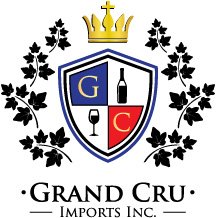6 fancy wine terms that are worth knowing
Oh the wine world, whether you’re new to wine or an expert collector the learning never ends! And a big part of learning is getting more familiar with the many wine terms to know. Some words are scientific, some more colloquial, while others are borrowed from their country of origin. We’ve outlined below our first 6 fancy terms that we think are worth knowing.
1. Enology
Pronounced e-nol-o-gy, enology is the science or study of wines and winemaking.
Prior to the 19th century little was known about the process of fermentation or what brings about spoilage.
The Greeks stored wine in earthenware amphora, while the Romans looked to oak cooperage to prolong wine’s life. Both groups likely drank all their wines within a year of vintage and the use of herbs, cheese, honey, salt and water were common to help mask spoilage. The move in the 17th century to move from wooden barrels as aging vessels to glasses bottles and the use of cork stoppers would allow wines to be bottle aged for years.
By the mid-19th century the French chemist Louis Pasteur was among those who helped explain the nature of fermentation and identified the yeasts responsible for it. Pasteur's contribution to enology continued with his identification of bacteria that spoil wine. Pasteur would also devise a heating method (pasteurization) to kill the bacteria.
Later in the 19th century, methods were developed for growing pure strains of specific yeasts in culture. Advancements in plant physiology and plant pathology also led to better vine training and less mildew damage to grapes.
In the 20th century, mechanical innovations supported quality control. Innovations that included stainless steel fermentation and storage, the arrival of refrigeration, and automation in the filtration and harvesting process.
2. Cuvée
Pronounced koo-vey, Cuvée is said to have a few meanings — how fun! When it comes to Champagne, it can refer to the first-pressed juice. More commonly, it refers to a blend of either more than one grape variety or of wine from specially selected barrels or vats that become a well-balanced sparkling wine. The term Cuvée although not regulated like Champagne, is often used to imply quality, but the consumer should also be aware that’s not always the case.
3. Terroir
Pronounced teuh- waah, Terroir is a French term derived from the French word terre which means earth. And as the widely used wine term we’ve come to know today, terroir broadly represents “a sense of place”.
Simple definitions of terroir as it pertains to winemaking, embrace the idea of a vineyard’s soil and climate contribute greatly to the characteristics of a wine, such as its acidity, colour, etc. And it's widely accepted among wine aficionados that certain elements contribute most: Soil composition, climate and topography.
Read more about the robust topic of terroir here.
4. Aeration
Wine being decanted, aerating the wine
Whether you pour some wine into a big glass and allow it to sit for some time, or decant that bottle at dinner, giving the wine a chance to breathe prior to consuming, what you may not know is that you’re aerating the wine. This simply means exposing the wine to air which enables a reaction between the gases of the air to occur, opening up its flavours and then settling into its true taste and character. Most reds and only some whites benefit from aeration.
5. Astringency
Astringency is one of the most important sensory characteristics of red wine (along with balance and body) and can be defined by the book Red Wine Technology by as “the complex of sensations due to shrinking, drawing or puckering of the epithelium as a result of exposure to substances such as alums or tannins.”
In wine, astringent agents, such as tannins, take on many subtle forms, from having broad sub qualities of roughing, drying and pucking, and in the minds and (mouths) of experienced tasters, these attributes can be split even further.
Things like polysaccharides (from grapes and yeast), ethanol (alcohol content of the wine), pH and ionic concentration (a measure of the strength and concentration of acids in wine) can influence salivary lubrication, both by influencing phenol-salivary protein binding and by directly reducing salivary viscosity, thereby increasing friction in the oral cavity which can lead to the aforementioned sensations in the mouth.
It’s important to recognize that an understanding of astringency is not possible without considering the subjective nature of astringency and that the appreciation of wine is truly a unique and individual experience.
6. Brettanomyces
Brettanomyces yeast growing close up
Pronounced bret-tano-my-sees and commonly known as Brett, Brettanomyces is a yeast commonly associated with red wine spoilage. It’s not uncommon for winemakers to add sulphur dioxide to prevent the presence of unwanted yeast like Brett.
The presence of Brett in wine is usually quite obvious. Have you ever caught a whiff of barnyard or sweat in your wine? Well, perhaps you were in the presence of Brett!
It should be noted that some producers intend to have traces of Brett in their wine as some strains are less offensive, leaning towards adding a smoky, leathery and funky quality, which can be desirable and add complexity to wine.




